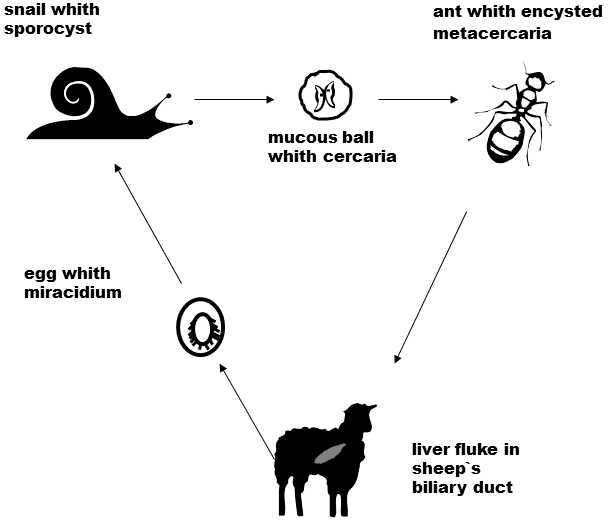IV.8.2.1 Pseudoaltruistic behaviour of individuals of the same biological clone is not a product of group selection.
Neither group selection nor altruistic behaviour is involved amongst social insects, even in species where there is a major level of movement of adult individuals from one cast to another through additional, frequently external factors of induced differentiation.In this case, the reproduction success of individuals determines the success of the entire nest, e.g. for ant hills or termite colonies.However, non-reproducing casts of workers or soldiers are not individuals in the true sense of the word, as they do not pass their genes on to their progeny.They could more probably be considered to be systems analogous to the individual organs in fauna, where we cannot speak, e.g., of altruistic behaviour of a hand, eye or stomach towards the kidneys or towards germinal cells in the sex organs.
Typical examples of this type of pseudoaltruistic behaviour are encountered in some parasitic organisms.Wasps of the Copidosomopsis tanytmemus species, which parasite on the larvae of leaf roller moths, are characterized by polyembryony:Several genetically identical larvae of the parasitic wasp develop from one egg.Some of these larvae are highly specialized in killing foreign larvae.They have large mandibles and are relatively mobile.The first thing that these larvae do after hatching is to “clear the field” of all foreign larvae and parasite eggs.However, the modification of their mandibles prevents them from taking in food and they die after fulfilling their biological role.(According to newer information related to this species, these larvae primarily play a role in intersexual competition, i.e., they are responsible for a shift in the sex ratio in the local population in favour of females (Grbic, Ode, & Strand 1992).)
A similar situation is encountered in fluke worms Dicrocoelium dendriticum (Spindler, Zahler, & Loos-Frank 1986).The life cycle of this parasitic helminth occurs in three hosts – in sheep, terrestrial snails and ants (Fig. IV.9).The cycle begins in the snails, in which the larvae of the fluke worm reproduce asexually to a clone of about 50 cercaria, which are excreted from the breathing holes of the snail together, forming a “slime ball”.The balls, which stick to the surface of grass, are eaten by ants, in whose bodies the individual cercaria are gradually released and differentiate into a different type of larva metacercaria.One or two of them enter the nerve ganglia of the ant, where it reprograms the behaviour of its host in an interesting way.In the cool part of the day, i.e. morning and evening, the parasitized ant crawls up to the tips of the grass, where it holds on with its mandibles and waits until it is swallowed by the final host of the fluke worm – a pasturing ruminant.In the middle of the day, the ants hide in the shade, so they don’t overheat and, according to some information, they return to the ant hills at night.The larvae, which sit in the ganglia of the ant and

Fig. IV.9. Life cycle of the fluke worm Dicrocoelium dendriticum
direct this entire behaviour, do not have any benefit from this action, in contrast to the other larvae, as they are not encysted in the ganglia and thus die in the digestive tract of the final host.This is termed pseudoaltruistic behaviour because all the larvae inside the ant come from the same slime ball and are genetically identical because of the asexual reproduction in the snail.From a human viewpoint, the behaviour of the larvae in the nerve ganglia thus seems highly altruistic; however, from an evolutionary standpoint, this is not true altruistic behaviour, as here the individual assists its own genetic copies.
